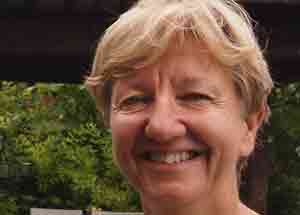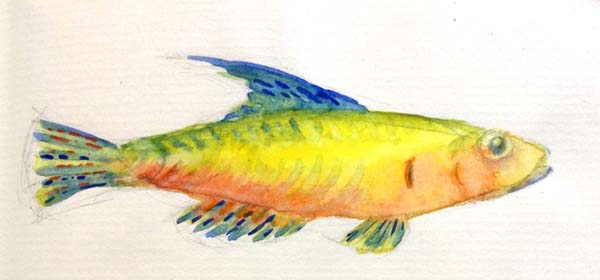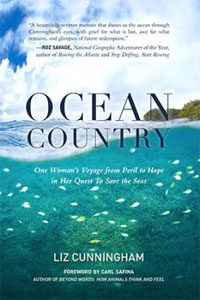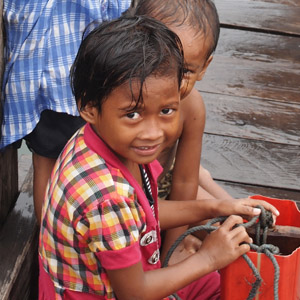Beginnings matter. You begin with something you want to keep coming back to: a gem, a lodestone, something important. In this case – the very first entry for this blog – it’s someone important.
Last year the coral reef ecologist Dr. Mark Erdmann discovered a new species of fish in the lagoon of an uninhabited island named Penemu, in the Raja Ampat archipelago of West Papua. Erdmann named it Trimma helenae, in honor of Helen Newman whose life was tragically cut short by cancer. Helen was the co-founder with Simon Day of the Sea Sanctuaries Trust which had established a Marine Conservation Agreement between the local community around that uninhabited island.
The last time Helen and I saw each other we sipped gin and tonics in the evening on her back porch, while I peppered her with questions. Until then biodiversity was some rarified idea I was struggling to wrap my head around. “Please,” I asked Helen, “in plain English, what’s the big fuss about biodiversity?”
“It’s like gold,” she explained to me, “It’s what you put away, what you rely on in tough times. Take rice—that feeds people, right? If you have many strains of rice, there is a lesser likelihood of mass starvation if a blight strikes the region, because some of the strains will survive. With climate change and rising sea levels, the more diversity of coral you’ve got, the more chance that some will survive.”
And so with grains, potatoes, fish, so many living things that are the basis of our survival. A few days later, diving in a coral reef, surrounded by an abundance of life, Helen’s words registered even more fully. Each life survives because of an abundant network of living organisms that supports that individual life, like the spokes in a wheel. Why does biodiversity matter so much? It matters because we need each other to survive.
Helen was passionately dedicated to preserving marine life, especially in Raja Ampat, as it was the world’s epicenter of marine biodiversity. “The need for more marine-protected areas is massive,” Helen had told me.“Raja Ampat has survived so far because it’s underdeveloped. There are not many places like this left. We’re at the bottom of the barrel; we’ve got to save what’s there.”
Most of my writing begins in a journal that doubles as a sketchbook. On New Year’s Day I stared at the blank pages of a new one. What could I put there to begin the year?
Helen’s fish.
The watercolor of her fish is like a talisman now. It reminds me of all the traits that Helen personified – she was so good-natured, fun to be around, dedicated, insightful, and passionate about her work. Helen’s fish is the Web site’s logo, in memory of her enduring dedication to conservation and her love of the sea.






